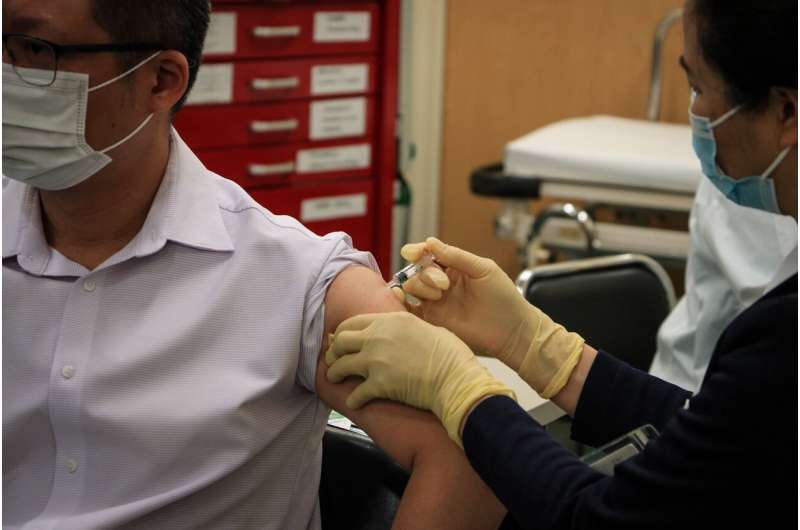Credit: Unsplash/CC0 Public Domain
Regarding vaccine hesitancy towards the COVID-19 vaccine, about half the population is in the "movable middle." More specifically, 20% are skeptical and 30% are open but uncertain. They want to know that vaccines are safe and that the benefits outweigh the risks. Using empathic messaging and transformative dialog, we can do our part to increase vaccine efficacy among our friends and family in the movable middle. The following three topics are among the most common reasons for vaccine hesitancy. In this article we will discuss how to address these tough conversations with friends, family, and community members.
Side effects and safety
When engaging with someone who cites concerns about side effects and safety as a reason for hesitancy regarding the COVID-19 vaccine:
- Lead with empathy by meeting the person where they are and listening to their concerns.
- Respect that it is okay to be hesitant. Ask: "What specifically worries you about the vaccine and its side effects?" Be affirming in your response.
- Give the facts about vaccine safety. Be upfront. Avoid using medical jargon and describe side effects honestly. For example, you might list common side effects, such as local pain at the injection site, fatigue, headache, muscle or joint pain, chills, fever, swelling and nausea. Note that these typically subside after a couple of days. In addressing the safety of the vaccine, use language like "safe and effective" rather than "quickly developed."
- Encourage them to direct questions to their health care provider. Answer what you can but be honest about what you can't answer. Refer to seeking out new information as "keeping up with the latest information" rather than "there is a lot we still don't know yet."
Lack of knowledge
When engaging with someone who cites lack of knowledge about COVID-19 vaccines as a reason for hesitancy or not getting the vaccine:
- Lead with empathy by meeting the person where they are.
- Be curious about their knowledge regarding COVID-19 vaccines by asking: "Tell me what you know about COVID-19 vaccines."
- Validate their accurate knowledge points, and wonder about their inaccurate points by saying, "Tell me more about this" or "say more about that." Be sure to validate responses by saying, "I can see how you arrived at that understanding."
- Be curious by inquiring; "Are you interested in additional information about COVID-19 vaccines?"
- Answer questions and provide knowledge about the vaccines using everyday language.
Government distrust
When engaging with someone who cites distrust of the political and economic motives of the government regarding COVID-19 vaccines:
- Lead with empathy by meeting the person where they are.
- Acknowledge all feelings of distrust.
- To the wonderer., ask: "When did you first come to distrust the motives of the government and government-sanctioned organizations?"
- Listen to their narrative without interruption.
- Validate their narrative and wonder about exceptions to their story. Ask: "Have you or anyone that you know ever been able to trust the motives of the government?"
- To the wonder, ask: "What might move you from distrust of the government's motives to increased trust of the government's motives?"
Tips for conversations
When having these difficult conversations with family and friends, it is important to be an active, empathetic listener and acknowledge hesitancy. Make the conversation collaborative, not combative. Remember, they are receiving a lot of different information about the vaccine from different sources. Overall, the choice is theirs to make, and you could be an important voice in their departure from the "moveable middle."
More information: Messaging Guidance. (n.d.). Ad Council COVID-19 Initiative. April 15, 2021, adcouncilvaccinetoolkit.org/re … s/messaging-guidance
Provided by Case Western Reserve University
























